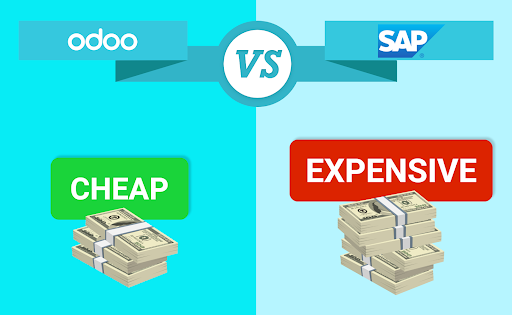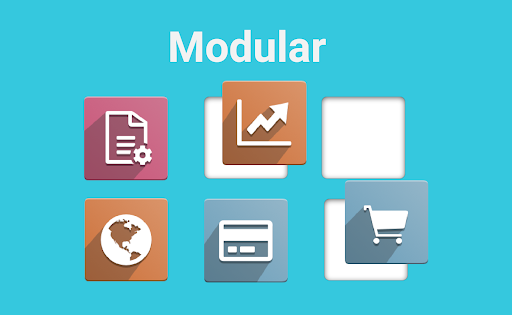Odoo Malaysia VS SAP: What Is The Difference Between Odoo and SAP?
Odoo
- RM 120.00
/user/month - Flexible, tailor to specific business needs
- Install what you need only
- Shallow learning curve, easy to navigate
- Take shorter time to implement ERP
- Fast & responsive support
Need support? Talk to us
SAP
- RM 900.00
/user/month - Less flexible, business workflow adjust to system nature
- Install a set of modules
- Steep learning curve, difficult to navigate
- Take longer time to implement ERP
- Slow response time
If you have looked into ERP systems before reading this blog, you might understand how they can fix common business problems like slow and erroneous data entry, siloed data, and outdated reports and analysis.
Right now, there are many ERP software options available in Malaysian market, each capable of tackling specific problems across various business sectors and sizes.
Let's compare two: Odoo and SAP. On one side, there is SAP, a big and well-known ERP company. On the other side, there is Odoo, a new and open-source ERP that growing really fast.
So which one should you choose? Odoo or SAP? (How about Enterpryze vs Odoo?)
We are here to provide you with a clear difference between Odoo and SAP ERP, helping you determine which ERP suits your business needs based on your company's industry and size.
What is SAP ERP Software?
SAP, originally named System Analysis Program Development, is a multinational enterprise headquartered in Germany. Founded in 1972, it has grown into a global leader in enterprise software solutions.
SAP has more than 230 million cloud users and offers over 100 solutions covering all aspects of business,
SAP's main product, SAP S/4 HANA puts all the important information in one place so that everyone in a company can seamlessly work together. This makes work faster and better, and customers like it too. In the end, it helps companies make more money.
What is Odoo ERP Software?
Apart from SAP, there is another powerful business management ERP called Odoo ERP. Odoo was initiated in 2005 and originates from Belgium. Odoo offers a comprehensive suite of handy tools for businesses.
Today, Odoo is the trusted choice for over 5 million customers worldwide, including those in Malaysia. Odoo's CEO Fabien Pinckaers, plans to hire 1,000 more employees to better support Odoo's customers to improve the user experience.
Odoo, an open-source software suitable for businesses of all sizes in Malaysia. Odoo ERP is built on a modular structure where you install only the modules you require. This approach not only saves you money but also provides the flexibility to adapt as your business grows.
Compare Odoo and SAP
In this blog post, we will list the key differences between Odoo Malaysia and SAP in detail. Our goal is to help you better understand which ERP solution is right for your local business.
(And, you will know why Odoo is better than any other ERP)
Here are 6 KEY FACTORS to consider when choosing the right ERP system for your business in Malaysia:
Cost
Flexibility
Modularity
User Interface
Implementation Process
Support
Cost
The cost of setting up an ERP system worries all businesses.
According to the official Odoo website, the annual cost of implementing Odoo ERP for users is $7500 (~RM 34,400) while the corresponding cost for SAP Business One is $282,625 (~RM 1,296,260).
This indicates that Odoo ERP is significantly cheaper,170 times cheaper than SAP Business One.
 Flexibility
Flexibility
Users are also concerned about how flexible ERP systems are.
SAP Business One is not very flexible. It is hard to customize and needs experts, which takes a lot of time and money. It is suitable for companies that always do things the same way.
In contrast, Odoo ERP is highly flexible. It is flexible to change to fit any business model, big or small, in any industry. Look at our Odoo Malaysia Localization, it has valuable features that specifically cater to Malaysian businesses that SAP Business One doesn't have.
Modularity
Why does ERP modularity matters?
SAP Business One has a rigid modular structure. Users have to navigate across multiple modules to complete even basic workflow. And, it is great for industries with complex operations only.
Odoo Malaysia has a high modularity structure, enabling you to pick specific modules along with your business growth. (You only pay for what you need!) So this is great for startup businesses all the way to large enterprises.
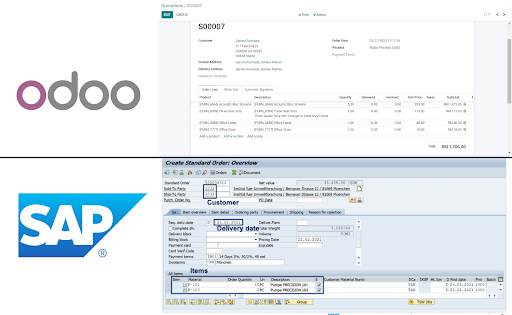 User Interface
User Interface
Trust us, how user-friendly the software is to use really affects how well your team works.
SAP ERP can be tougher to learn and use because its user interface is more complicated. Users often struggle to find what they Eric.
Odoo Malaysia has also been said to have a clunky user interface. But don't worry, Odoo is always trying to make it better for users.
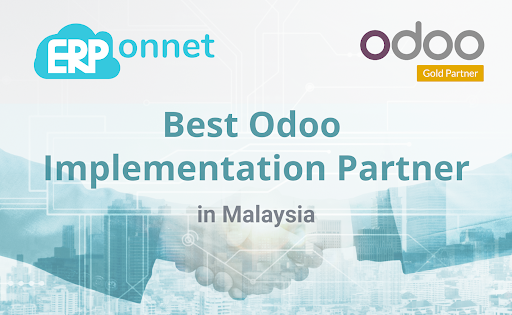 Time Taken for ERP Implementation
Time Taken for ERP Implementation
For businesses needing a quick solution to their ongoing issues, the time it takes to set up an ERP system is crucial.
Using SAP is not straightforward.
SAP developers need to have JAVA, C, C++, and ABAP (SAP's unique programming language) knowledge. This makes customization challenging as they will take a long time to learn the language, leading to a lengthy and effort-intensive onboarding process.
Odoo Malaysia is more direct.
Odoo is built with Python and Javascript, which are easier to learn. Its modular structure simplifies the implementation process, allowing easier customization where Odoo developers can work more efficiently. As a result, the implementation process is quicker with Odoo.
 Customer Support
Customer Support
Once ERP implementation is completed, make sure you have someone to turn to if things go wrong.
SAP ERP provides support through a dedicated support team but it is less responsive than Odoo community forums in Malaysia.
Other than community forums, Onnet Consulting offers paid support packages to Malaysian businesses, ensuring any bugs and issues are promptly identified and addressed.
Should I Choose Odoo or SAP?
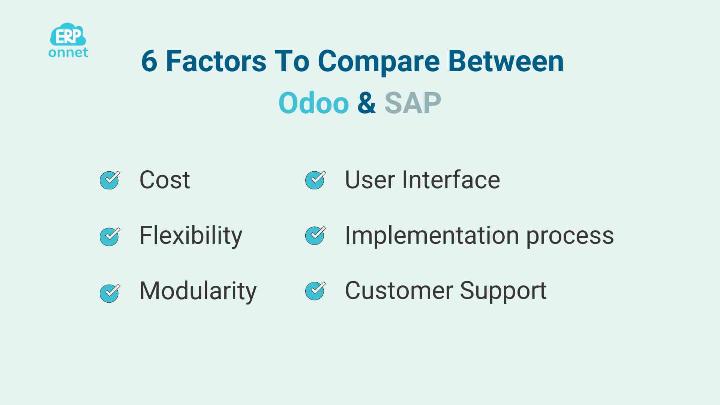
Choosing the right ERP system for your business is a big deal, and you want to make sure you get it right.
You will want to consider things like pricing, flexibility, modularity, user interface, implementation process, and customer support to determine which system will work best for your unique needs.
Both Odoo Malaysia and SAP have their own strengths and weaknesses.
If your business has a larger budget and needs strict adherence to processes, then SAP may be the way to go, even though it has a steeper learning curve and is more expensive.
But, if you are looking for an ERP system that is cost-effective, flexible, and user-friendly, then Odoo Malaysia could be the perfect choice for you.
Ultimately, the decision is up to you and your specific business needs, so take your time to evaluate all your options carefully.
Feel free to reach out to us whenever you are ready to get your business onboard with Odoo!
